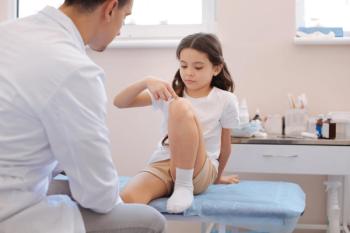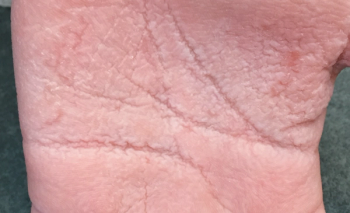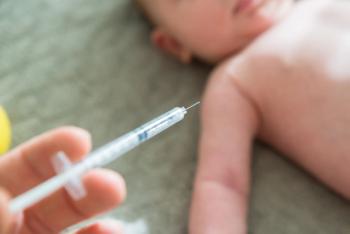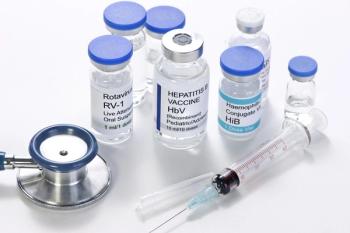
Be vigilant for infectious complications in children who are prescribed biologic response modifiers for various immune-mediated diseases.

Be vigilant for infectious complications in children who are prescribed biologic response modifiers for various immune-mediated diseases.

Pediatricians must evaluate various clinical guidelines to determine the best individualized treatment for sleep apnea in their patients.

A 16-year-old girl presents to the clinic for acne follow-up and mentions that her palms wrinkle significantly after only a few minutes of immersion in water. She is otherwise well and has no significant past medical history.

Pediatricians are in a unique position to identify risk factors for suicide and provide anticipatory guidance and interventions to patients and families.

The intrusion of digital media into the lives of children is causing concern for parents about how best to guide use of this omnipresent technology.

Complementary and alternative medicine (CAM) to me implies mostly unproven therapies with at least some partial evidence in support. By contrast, “fringe therapies” are more bizarre, with only anecdotal evidence.

Recommendations for the early introduction of peanut into children's diets might apply to other potential food allergens as well.

Infants who are breastfed exclusively show less hypothalamic stress response than infants who have been breastfed little or not at all, according to a study in 42 healthy, 5-month-old infants and their mothers.

These 10 Journal Club article summaries from 2018 are worth a second look. Some offer information to change your practice now, while others offer insight into potential future changes.

Overall vaccination rates in children are good, but there is a small pocket of children who are completely unvaccinated, and this number is rising.

The intimate nature of sports, the comradery of a team environment, the trust of a coach-all these are intrinsic to the nature of athletics but can also set the stage for abuse. Learn how you can help.

Pediatricians play a vital role in guiding healthy mental and physical development for gender-diverse children and teenagers.

I recommend trying “Riddle me this! – as pediatric providers we tend to enjoy playing and many of us enjoy the challenges of active engagement in online learning that is also informative.

Your innate sense of empathy makes you a born counselor and a source of caring, concern, and essential guidance for your adolescent patients. Does your clinical IQ always keep pace with your emotional intelligence when it comes to menstruation issues?

A subtle but dangerous form of abuse-neglect-is the cause of death in three-quarters of all child abuse cases. Learn how you can intervene.

Optimistically, 1 in 5 well-care visits among low-income children are missed, but that number may also be as high as half if children who miss visits with their regular provider aren’t getting care elsewhere.

Social media and other digital platforms offer pediatricians a new way to deliver information on health promotion to patients and their families.

There are constructive ways to carry on difficult conversations with parents about immunization refusal or vaccine hesitancy.

A recent study of the Special Supplemental Nutrition Program for Women, Infants, and Children (WIC) finds more action is needed to ensure healthy nutrition for all low-income children.

Many parents struggle with picky eaters, and it is a common complaint among parents who use federal supplemental nutrition programs, too. Recent research highlights how pediatricians can help.

Lymph node enlargement is common in children. Focused assessment and quick diagnosis of cause are key to ensure proper treatment.

It’s not just alcohol and seatbelts that factor into teen driving safety. A recent report reveals additional guidance pediatricians should offer to teenaged drivers and their parents.

Whereas infants don’t typically receive direct pertussis vaccination until at least age 2 months, a new study suggests that birth doses of the vaccine may be both safe and effective when mothers aren’t able to receive the vaccine themselves and pass antibodies to their babies.


Using the Medicare fee schedule as a universal reference benchmark for cost of services can help pediatricians estimate out-of-pocket expenses for patients and families.

Pediatricians can be a valuable source of guidance for parents about early education programs for children to help prevent substance use by the teenaged years and long after.

Identity development, a fundamental task in adolescence, is an even greater challenge for LGBTQ youth.

Physicians need to increase awareness about maintaining a quality of life for children who have to live with bleeding disorders.

Here’s solid advice for what to do when your online healthcare advocacy suffers harassment and false reviews.

Challenges at home can impact one’s work and contribute to physician burnout.